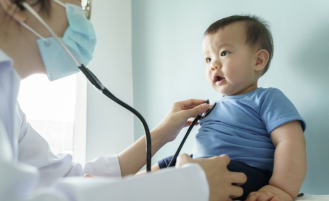Hypo- and Hyperglycemia When You Have Diabetes
When living with diabetes, it is important to maintain your glucose level within your target range to help slow or prevent the onset of complications. If you are not aware of your target glucose range, be sure to speak to your healthcare provider to find out what it is.
Both hypoglycemia (low blood glucose) and hyperglycemia (high blood glucose) are short-term complications of diabetes. Everyone living with diabetes may at one time or another have one or both of these complications. The key is to know what to do for yourself if one or the other happens. Your family and friends should also know how to help you, if needed.
Hypoglycemia
The American Diabetes Association defines any blood glucose less than 70 with or without symptoms of hypoglycemia or low blood sugar. Hypoglycemia usually comes on suddenly.
Hypoglycemia may be caused by too much diabetes medication (pills or insulin), too much or unplanned activity or at the wrong time of day, a skipped or delayed meal, or not eating enough carbohydrates in a meal/snack.
While there are common symptoms of hypoglycemia, not everyone will have the same symptoms every time, and symptoms may change over time. This is why blood glucose monitoring is so important as part of your diabetes management plan. In addition, some people don’t have symptoms until their glucose level is very low (less than 55).
Symptoms of hypoglycemia may be any of the following (this is not a complete list):
- Sweating
- Cool, clammy skin or chills
- Shaky
- Dizzy, lightheaded
- Fast heartbeat, heart palpitations
- Sleepy, tired
- Feeling weak, having no energy
- Hungry
- Confused
- Coordination problems, clumsy
- Headache
- Nausea
- Mood swings, irritability, impatience
- Nervous or anxious
- Nightmares or crying out in your sleep
- Seizures
- Color draining form your skin (pallor)
If you suspect you are having hypoglycemia, you will want to check your blood glucose level and begin treatment immediately. When treating hypoglycemia you should follow the “rule of 15.” This means getting about 15 grams of fast-acting carbohydrates. The following are some examples of 15 grams of fast acting carbohydrates:
- 4 ounces of juice (apple or orange)
- 4 ounces of a regular soda (not diet)
- 4 Dex4 tabs
- 1 tablespoon of sugar, honey or corn syrup
- 1 tube of glucose gel
- Hard candies like jelly beans or gumdrops (check the food label to learn how many you can eat for about 15 grams of carbohydrates)
Wait 15 minutes to get the fast-acting carbohydrates into your system and start raising your blood glucose level. Recheck your blood glucose level. If your blood is still less than 70, repeat the rule of 15 again. If you need to repeat the rule of 15 a third time, call 911.
Once your blood glucose level is over 70, you need to follow up with a snack or meal that contains complex carbohydrates and protein.
Once you have treated the hypoglycemia, you may want to think about the possible cause(s) so you can prevent it in the future. If you have frequent hypoglycemia, let your healthcare provider know so adjustments can be made in you diabetes plan.
If you are unable to treat your hypoglycemia, someone else may need to give you a shot of glucagon. Check with your healthcare provider about having a prescription for glucagon. A family member/friend will need to know how to administer it.
If you are unresponsive, a family member/friend will need to call 911.
A good plan is to always have some form of fast-acting carbohydrate and a follow-up snack with you.
Hyperglycemia
The American Diabetes Association defines any blood glucose greater than 250 with or without symptoms of hyperglycemia or high blood sugar. Hyperglycemia has a slower onset and may occur over hours to days.
Hyperglycemia may be caused by not enough diabetes medication (pills or insulin), forgetting to take your diabetes medication, not enough activity, eating too many carbohydrates with your meals or snacks, stress or illness. Not drinking enough fluids, which leads to dehydration, especially in warmer weather is another cause. Do not count caffeinated beverages or alcohol in your fluid intake.
As with hypoglycemia, not everyone will have the same symptoms of hyperglycemia every time and symptoms may change over time. Some people don’t have symptoms until their glucose level is very high (over 250 or more).
Common symptoms of hyperglycemia may be any of the following (this is not a complete list):
- Very thirsty
- Frequent urination
- Blurry vision
- Very hungry
- Tired or very fatigued
- Slow healing of a cut or sore
- Frequent vaginal yeast infections
- Headache
- Unexplained weight loss
- Trouble concentrating
When you suspect you are having hyperglycemia, you will want to check your blood glucose level and begin treatment as soon as possible.
- Check your blood glucose level every 3-4 hours
- Drink water or other non-caffeinated beverages
- Take your medication as prescribed by your healthcare provider
- Follow a healthy meal plan (pay attention to portion sizes)
- Take a walk or get some other form of exercise (do not do exercise if you have moderate to large ketones)
- Check your urine ketones
Call your healthcare provider if you have moderate to large ketones or continue to have hyperglycemia for three days and you don’t know why.
If hyperglycemia is not treated, it may progress into diabetic ketoacidosis (DKA). DKA is most often seen in patients with type 1 diabetes at time of diagnosis, when they are sick, or if they have missed doses of their insulin. However, DKA can also occur in type 2 diabetes, especially if it is not managed well.
Symptoms of DKA include vomiting, nausea, dehydration, unusual fruity-scented breath, deep labored breathing or hyperventilation, rapid heart rate, confusion or disorientation, or coma.
Diabetic ketoacidosis most often requires a visit to the ER and a hospital stay.
Once the hyperglycemia has been treated, think about what may have caused it so you can prevent it in the future. If you have frequent hyperglycemia, let your healthcare provider know so adjustments can be made in you diabetes plan.
While having hypoglycemia and hyperglycemia can happen to people living with diabetes at any time, having a plan in place and knowing what to do can help keep you healthy and out of the hospital.
People living with diabetes should wear medical identification letting others know you have diabetes. This is especially important for first responders in emergencies.
Having diabetes and living the quality of life you desire, comes with having plans in place to take care of the unexpected that can occur in everyday living.
Overlake offers one-on-one education to help people learn practical skills to manage diabetes, including medication, meal planning, glucose monitoring and more. Classes are taught by certified diabetes educators. Please see your healthcare provider for a referral. Learn more about diabetes education at Overlake, or call (425) 688-5111.









